Archive for January, 2010
Crevasses
We have a crevasse at the top of the ramp which has ropes allowing us to go for trips down inside of it and thru the cave system.
What this really drives home when you look up to the top of the cave and see the snow bridges is how careful you need to be when doing fieldwork. Crevasses are a constant threat on glaciers and are the greatest danger to field parties down here.
The movement of glaciers flowing downhill creates crevasses when the brittle surface layer (50-80m) is subject to forces such as change in angle or speed of flow. Glaciers in Antarctica are usually covered by several feet of snow making it difficult to see what is happening below the surface.
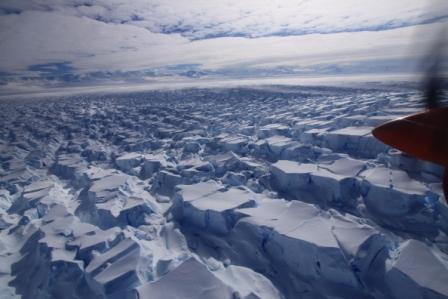
Crevasses tend to appear in similar places on any given glacier and can occur long distances downstream of the features that cause them. The causes of stresses on the brittle surface layer are:
1) Shape of slope – Convex slopes are more likely to be crevassed than concave slopes compression is a good thing and tension is a bad thing as it causes cracking.
2) Speed of flow
3) Glacier shape
4) Type of glacier
In areas where no crevasses are visible you will have to predict their likely position and orientation. Knowing the orientation of crevasses is as important as spotting where they are. The presence of crevassing is often marked by slumped snow bridges showing up as a faint linear depression.
So we learnt in field training how to rope up and use the necessary equipment to rescue someone from a crevasse. Crevasse bridges can be appreciably weaker in the late afternoon after the sun has warmed the snow. So during the summer travelling at night could be preferable at the end of the winter the bridges are obviously stronger due to maximum snow cover and lower temperatures.
Sea Lemons
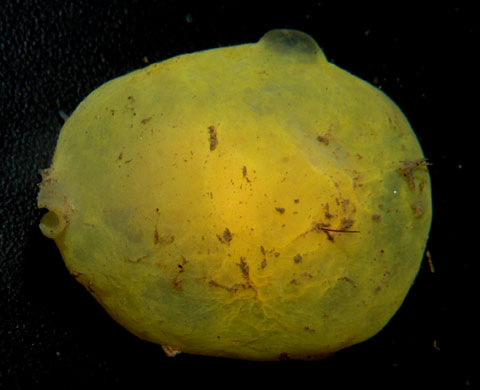
A picture of a Sea Lemon (marseniopsis mollis) a kind of Mollusc as the shell is internal.
We collect them to go into the aquarium where they are used to address the question
We kept our animals in enormous aquariums until we needed them for research. One of the research questions we address is the temperature range these animals could withstand so they are taken to their thermal limits and weighed wet and dry. Normally the temperature in the waters around Antarctica is a very stable low temperature (-1.8 to 2 degrees Celsius). It is important to explore whether animals can adapt to higher temperatures because of global warming.
All dressed up with no where to go – Leopard Seals..
Lep in Ryder Bay with Leonie behind (my playground) this was taken on the way back from a trip to Lagoon.
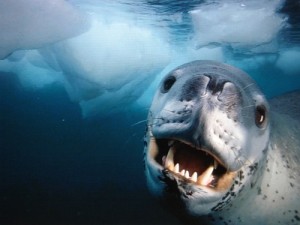
This is a picture by Paul Nicklen of a Lep that was one of the winners of the Wildlife Photographer of the Year awards.
Leps are the bain of our lives down here at Rothera. The Marine Team is effected sometimes on a daily basis by their prescence. At least 4 dives since I have been here that I was meant to do have been aborted when we were fully kitted up about to go in as a result of them. It really is frustrating when we have work to do. Someone described them as sinister and evil looking they really are. I don’t like snakes at all and leps look like reptiles and swim like reptiles as well.
They are the second largest species of seal down here only the ellie (elephant seal) is larger. The leopard seal is the Antarctic’s equivalent of the polar bear and is the top predator on the continent. It has canine teeth that are 2.5 cm (1 in). Read more about them here.
Cooking up a storm
Last weekend on Saturday I was on Gash (more about that later) and decided to make oatmeal and raisin cookies and shortbread for smokos. Everyone liked the cookies so much it was requested that I come back in to make more so yesterday I made more!
On new years day seeing as I was on SAR and was called out and as I don’t drink I decided to help out in the kitchen. We had our normal Saturday night dinner on the Friday instead and I made a chocolate cake that I was given the recipe to from a friend in France. I made hot fudge pudding cake the week before so everyone decided to pick which dessert they liked the best. It turned out to be about even votes for each. It really does take quite an effort to make stuff for 80 people. Tomorrow I will probably make a birthday cake for two people on base. We are having a whole string of birthdays at the moment. Last weekend was the chippies and we made a beer chocolate cake!
Really!
New landing site at Killenbeck (like tieing up to a wharf!)
Everyday down here you pinch yourself to make sure you are awake however, the last few days have been such beautiful weather that you really can’t believe you are being paid to be down here! The Dash finally got the new part for the landing gear with the Twin Otter coming in from Punta and 14 people left this morning with 14 new scientists coming in tomorrow. In the meantime my Friday was a pretty great day culminating with sitting on the roof of the snowcat at the skiway on cushions in the sun reading a book looking out over an amazing vista.
I had a really great dive off of cheshire to replace the logger and we then did a little drift dive after the quick job. The seabed was covered in anemone that were feeding and it looked like a carpet of flowers in a meadow. At our safety stop there was a carpet of green algae that looked beautiful in the sunlight and made me think of grass.
On wednesday Danny (the other boatman) and I went over to Killenbeck and island to the east of the station that people rarely visit to do a survey. Everyone kept on saying it was heavily reefed and hard to get to but we have now ID’d a really easy place to land and a very easy way of getting there. Yesterday after the engines had been serviced I did a test run over there with James (Field Assistant), Nicola (new chef), St. David and Caroline (Halley Base Commander). The cove that we tied up in looked so inviting in the sun.
After the afternoon dive we did some boat training for new crew during scrub out and then packed the boating up in time for dinner. After dinner a group of us took the snow cat up to Vals and I did a few runs down hill but it was a bit icy and then a short distance on the cross country skis. After that I retired to the cushion on the snowcat roof to read a book – this really is the life!
Unfortunately I am on SAR for the third weekend in a row but I am doing it so that I get two weekends off in a row and hopefully can get to summit Leonie and stay in the hut at Lagoon one of those weekends.
Skua Survey
I went with Matt Von Tersch (in photo with helmet on) the Bonner Lab Manager to do a Skua survey. During the Skua nesting season he does surveys in the ASPA – Antarctic Special Protected Area and the point once a week. The survey is done to monitor breeding success each season. The ASPA is there to monitor the effect of human impact on the point. All the nests (22 in total) are marked and Matt measures the eggs volume by picking them up and measuring length and width.
He then marks them with tippex so as to know whether there are new eggs or not. With the chicks he measures their wing length and weight twice a week until they fledge which is 45-50 days after they are born. Some of the adult skua are ringed we don’t know where they go during the Antarctic winter. They come back year after year with the same partners so mate for life.
Mel at work
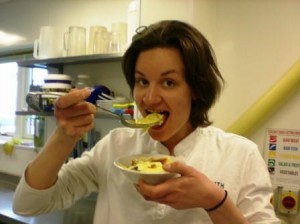
This is Mel at a girlie evening we had in December. During the day she is hard at work at the Bonner Lab as a marine biologist. She spends a lot of time diving and in the aquarium looking after all the animals. She is a beautiful singer and is from Australia. Check out an article about her.
Fur Seals
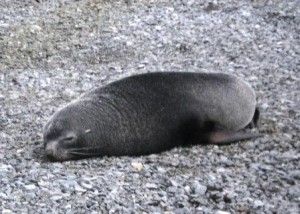
This is a fur seal there is one at anchorage at the moment. They are pretty agressive and can move faster than a person running so best to stay clear as a bite from one will result in being sent north.
IBIS study
When I am diving sometimes I am supporting the scientists on the Iceburg Impact Study (IBIS). This is set up in South Cove…
Little is understood about the effect of iceberg imact on benthic communities. This study attempts to quantitively assess several aspects of this unique polar ecological phenomenon. The study hopes to address the following questions
Do icebergs have as great an affect on the range of flora and fauna as currently believed and how does this vary with marine depth.
Do iceberg impacts actually improve biological diversity and in some cases actually save certain scavenging groups from what would be starvation.
What affect has the presence of icebergs had on the evolution of Antarctic fauna and flora assemblages?
What will happen if the numbers of iceburgs increase due to predicted global warming?
Two sites have been set up one of east beach and the other in south cove. Each site has three transects with grids of impact blocks at varying depths. The impact blocks are amade of concrete and plastercine. The top layer of plasticine is than colored and gridded. Thsi design provides three levels of impact, from the slightest scratch to the plasticine being squashed to the concrete being broken into peices or even completely obliterated.
Monitoring the biodiversity is achieved by photographing the sites and calculating the percentage colonization of different species.
Other projects within the grid are surveying icebergs from teh same vantage points as regular intervals and integrate the images within a Geographical Information System. Also deploying settlement plates and cleaned rocks within recent iceburg scours.
Sitting by the dock of the bay…
Don’t worry I didn’t hurt myself again! This was taken before christmas when I was pretty useless with one hand and wasn’t allowed on the boat so I became queen of seal watch.
Seal watch is required before every dive we do. It means standing on the shoreline if the dives are done around base or sitting on the boat at the dive site on the islands for 30 minutes and looking for either lepoard seals or orcas. Sitings of either mean that diving is cancelled and no diving can occur in the next four hours. The only exception is if it is a lep sitting on an ice floe. If it is on an iceberg diving can happen somewhere a distance away but someone has to stay and watch the lep and if it goes into the water the divers have to get out.
More on leps later…
However, seal watch can be a relaxing way to spend an hour or so sitting on the side of the runway watching the planes take off and land about 50 feet from you. When there is no flying you sit there listening to the ice move or to music on your ipod with one earphone in so you can hear the vhf. On the beautiful sunny days there isn’t a better job on base in my mind!

